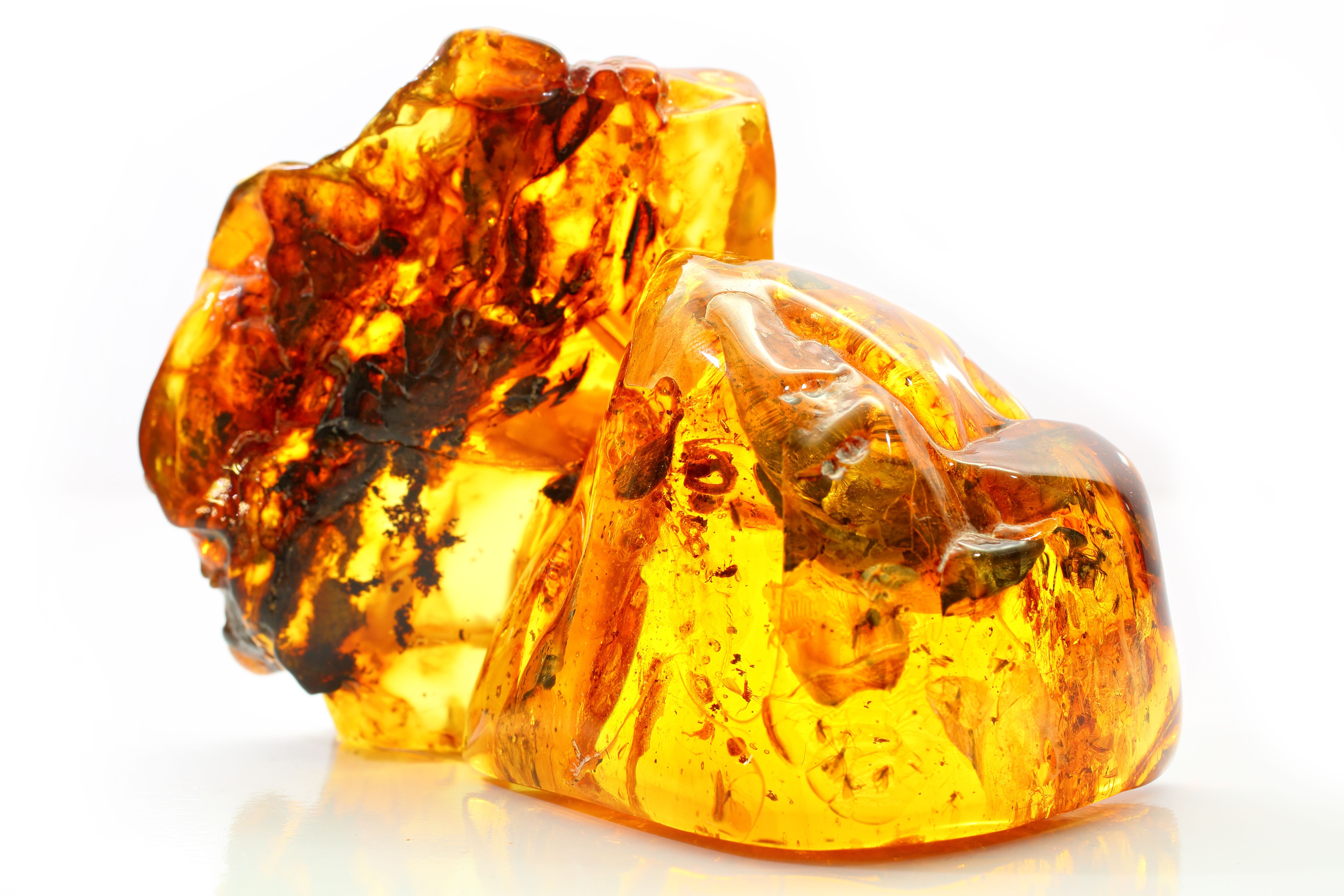FT-IR as a Determinant of Age and Origin Location of Baltic Amber Beads in Aššur, Iraq
Fragments of amber beads examined in 2019 showed a Fourier transform infrared (FT-IR) spectrum consistent with Baltic amber, or succinite, suggesting the artifacts came from the Baltic or North Sea regions.
Researchers in Germany, some of whom are associated with the Rathgen Research Laboratory (Rathgen-Forschungslabor der Staatlichen Museen) in Berlin, recently published a report on work done by that laboratory in 2019 to trace the history of two amber disc beads which were first discovered potentially more than a century earlier, in 1914 (1). The beads, the researchers said, came from a cushion under the large ziggurat, an ancient pyramidal stepped tower, of Aššur, Iraq. Although much of the recent study is historically focused, spectroscopic techniques that were applied to zero in on the beads’ place and time of origin are also described.
Ashur (Qal'at Sherqat), Assyria Historical city, Ninawah Iraq، it was a major ancient Mesopotamian civilization which existed as a city-state from the 21st century BC to the 14th century BC | Image Credit: © humam - stock.adobe.com

Amber's value in ancient time periods stemmed from its captivating appearance and rarity, making it a prized material for ornamental jewelry. Its use as a trade commodity extended its influence across many regions and cultures, while its ability to preserve ancient inclusions added to its beauty as a window into the past. In ancient societies, wearing amber denoted status and cultural significance, underlining its multifaceted appeal.
Specifically, this research team used Fourier transform infrared (FT-IR) spectroscopy, which is considered a preferred technique for infrared measurements. In the application of infrared (IR) radiation to a given sample, some radiation is absorbed while some is transmitted (passes through the sample). FT-IR measurements provide high resolution infrared spectra, which reveal the detailed chemical composition of samples.
By exposing the amber beads to a broad range of infrared wavelengths, FT-IR spectroscopy enables the identification of specific chemical bonds present within the beads' molecular structure. This non-destructive technique provides valuable information about the composition of amber beads, including the identification of functional groups such as hydroxyls and carbonyls.
In this case, the German team examined fragments of the amber beads with FT-IR, finding that their spectra largely aligned with that of Baltic amber, also known as succinite (1). This was determined despite what the researchers categorized as “heavy weathering,” a natural occurrence given the beads’ initial discovery in a foundation deposit of the ziggurat that is believed to date back to c. 1800–1750 BC. Addressing the historical aspect of their research, the authors hypothesized that the amber may have come to the Middle East in that era as gifts from “well-travelled persons from central or western Europe,” but could have also signaled the future amber trade industry in the Middle East and Mediterranean several centuries later.
Natural amber. Two extraordinarily beautiful pieces of transparent yellow amber with inclusions on a white background with a bokeh effect. A natural mineral for jewelry. Color texture of sunstone | Image Credit: © IGOR - stock.adobe.com

But what might that history mean in the context of any discoveries and knowledge gleaned from prior, modern studies? In spectroscopic analysis of amber, the researchers said, there exists a broad horizontal plane that is characteristic of well-preserved samples; this is known as the “Baltic shoulder” (1). A single C-O band (related to the presence of ester groups [C-O-C=O]) in the spectrum at approximately 1150 cm-1 is the most telling feature, with the Baltic shoulder preceding it from roughly 1250 to 1175 cm-1 (1). Comparing their sample to previous identifications of Baltic succinite, the researchers said with confidence there was a high likelihood that the amber found in Aššur was of this type, and therefore most likely originated in either the Baltic or North Sea regions.
Baltic sea seascape at sunset, Poland, wooden breakwater and waves | Image Credit: © tomeyk - stock.adobe.com

Although humbly referred here to as “circumstantial evidence,” the likely identification of Baltic amber or succinite in Aššur, Iraq by FT-IR spectroscopy shows how analytical science can play a role not only in future trends, but also in looking back through history and better understanding ancient worlds. The research team that put forth this study said their discovery makes it possible to imagine that as far back as the early 2nd millennium BC, people traveled with valuable cargo from central Europe to possibly Mesopotamia, indicating nascent attempts at globalization and commerce in this early period.
Reference
(1) Bunnefeld, J.-H.; Becker, J.; Martin, L.; Pausewein, R.-R.; Simon, S.; Meller, H. Baltic Amber in Aššur. Forms and Significance of Amber Exchange between Europe and the Middle East, c. 2000–1300 BC. Acta Archaeol. 2023, 92 (2), 228–243. DOI: 10.1163/16000390-20210031
Microplastics Widespread on Catalan Beaches, Study Finds
March 28th 2025In a recent study published in Marine Pollution Bulletin, a team of researchers from several Spain and Portugal universities and institutions (Rovira i Virgili University, Universitat de Barcelona, University of Porto, and Institut d'Investigació Sanitaria Pere Virgili (IISPV) assessed microplastic (MP) contamination along the Mediterranean coastline.
Using Spectroscopy to Reveal the Secrets of Space
March 25th 2025Scientists are using advanced spectroscopic techniques to probe the universe, uncovering vital insights about celestial objects. A new study by Diriba Gonfa Tolasa of Assosa University, Ethiopia, highlights how atomic and molecular physics contribute to astrophysical discoveries, shaping our understanding of stars, galaxies, and even the possibility of extraterrestrial life.
New Telescope Technique Expands Exoplanet Atmosphere Spectroscopic Studies
March 24th 2025Astronomers have made a significant leap in the study of exoplanet atmospheres with a new ground-based spectroscopic technique that rivals space-based observations in precision. Using the Exoplanet Transmission Spectroscopy Imager (ETSI) at McDonald Observatory in Texas, researchers have analyzed 21 exoplanet atmospheres, demonstrating that ground-based telescopes can now provide cost-effective reconnaissance for future high-precision studies with facilities like the James Webb Space Telescope (JWST) (1-3).